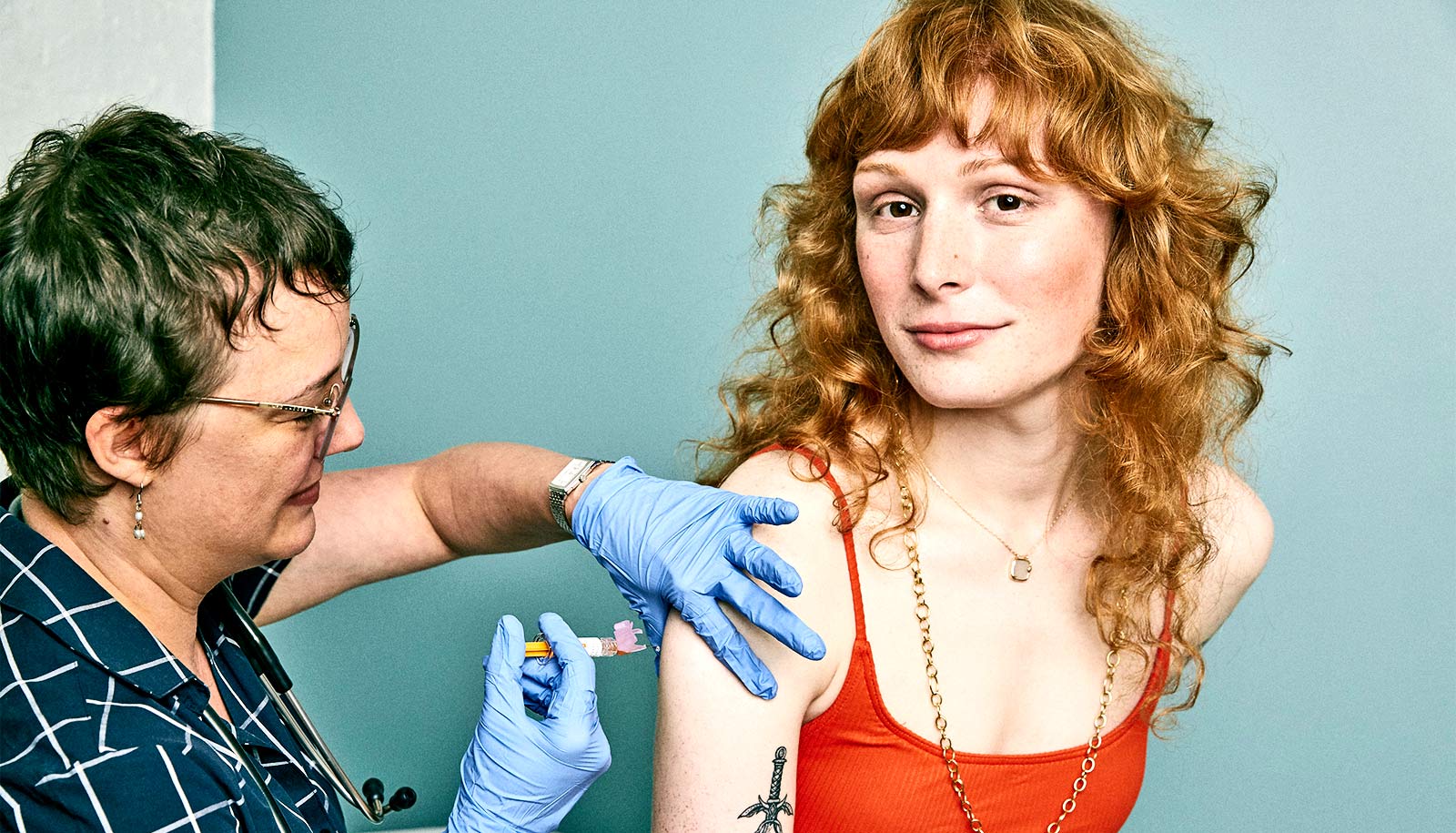New data on how cellular RNA levels change following infection or vaccination could help make future flu shots work better or even aid in the design of a universal vaccine.
Each year millions of Americans become sick with the flu, hundreds of thousands require hospitalization, and tens of thousands die. Getting the flu shot can reduce the chances of infection, but, at best, the vaccine is only effective 40% to 60% of the time, according to the CDC.
“Understanding these differences could help us identify new targets for building better vaccines as well as help us figure out better ways to treat the disease,” says George Mias, assistant professor of biochemistry and molecular biology and chief of the Systems Biology Division at the Institute for Quantitative Health Science and Engineering at Michigan State University.
Mias and his coauthors reanalyzed data from 18 previously published studies where scientists had taken blood samples from flu patients and vaccine recipients and studied those samples for gene expression. Researchers can measure gene expression by looking for the levels of RNA in cells. When a gene is expressed in a cell it means the DNA has produced RNA for this gene. The gene expression in cells can change in response to stimuli, including disease.
“The motivation for combining the different datasets is that typically the smaller datasets will be underpowered statistically to detect significant differences,” Mias says. “By combining multiple studies, we’re increasing our power and ability to detect gene expression differences between the variables that we’re interested in.”
The researchers found 978 genes with changed expression for flu infection and flu vaccination. Roughly a third of those genes, 334, overlapped while about two-thirds, 644, were unique to either flu infection or flu vaccination.
The distinct genes were involved in different processes in the body. Several genes that were expressed differently in flu infection, for example, are part of the body’s defensive mechanisms. On the flip side, genes exclusively expressed in vaccination were involved in antigen processing, which stimulates the body’s immune response.
The investigators also found 907 genes related to age and 48 related to sex that affect disease/vaccine gene expression changes. Understanding these differences could help scientists in their quest to develop a universal vaccine.
“We especially need to find something that works across ages better,” Mias says.
At present, the CDC recommends a high-dose vaccine for people over the age of 65 because their immune systems need more stimulation in order to create the necessary antibodies to protect them from flu viruses.
The researchers hope their results will serve as a starting point for future studies by providing gene targets that could be further explored through animal models or human research using newer RNA-sequencing technology.
“We found things that are specific to the flu or to the vaccine, so we need to ask, ‘What are the effects of those genes?'” Mias says.
“For instance, if the vaccine is activating additional genes and pathways that the disease itself is not activating, we should be asking, ‘Are they relevant and could they be linked to any side effects?’ Those are questions that deserve to be answered.”
The paper appears in the journal Frontiers in Immunology.
Source: Michigan State University



